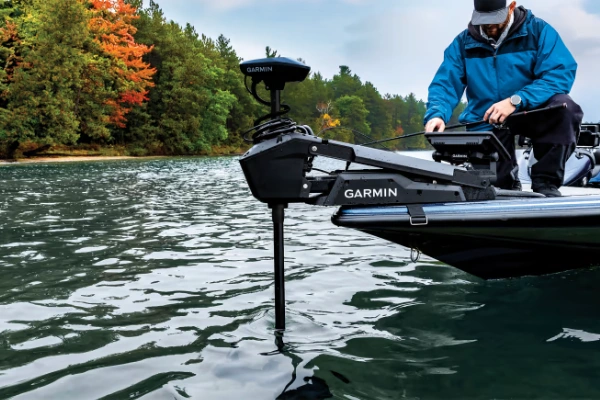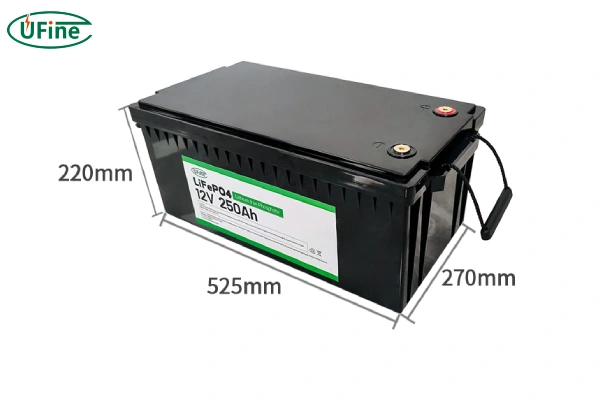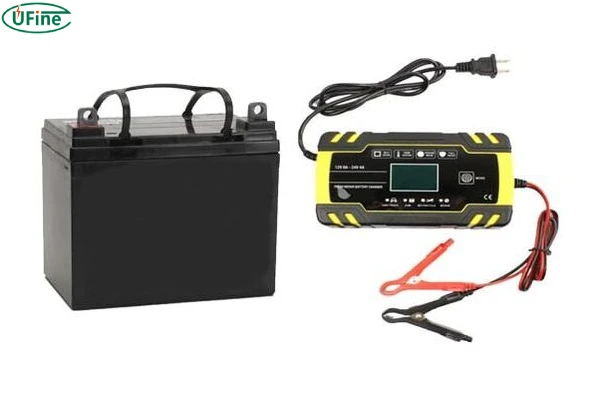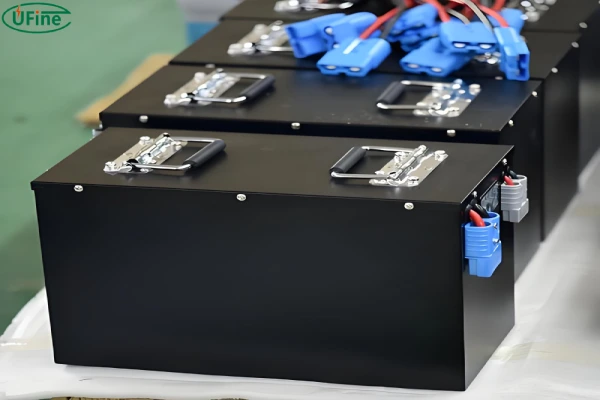Finding the best trolling motor battery shouldn’t feel as challenging as untangling a stubborn fishing line on a windy day. Yet, many anglers face uncertainty when trying to pick the perfect power source for their trolling motor. The sheer variety of marine batteries available—and their often unclear labels—only adds to the confusion. What should you consider?
-
Should you choose a starting battery, a deep-cycle battery, or a dual-purpose option?
-
Do you prioritize cranking amps or amp-hours?
-
Should you invest in a lithium battery or stick with a lead-acid one?
Trolling motors have unique power needs. Unlike your boat’s main engine, which requires short bursts of energy, trolling motors draw power continuously over extended periods. Selecting the right battery is essential for a seamless experience on the water. Let’s explore what makes a trolling motor battery ideal and how to find the best one for your needs.
Part 1. Deep-cycle batteries: the best choice for trolling motors
The key to powering a trolling motor lies in deep-cycle batteries. These batteries are designed to deliver steady power over long periods and can endure repeated discharge and recharge cycles without losing effectiveness. In contrast, starting batteries are made for brief, high-energy output and aren’t suited for the demands of trolling motors.
Deep-cycle batteries work much like a dependable fishing reel—ready to perform over extended use. They’re capable of powering your trolling motor through hours of fishing without compromising reliability. However, the specific type of deep-cycle battery you choose can significantly impact performance.
Part 2. Types of batteries suitable for trolling motors
Thanks to advancements in technology, there are several battery types that work well for trolling motors. While no single battery is labeled exclusively for trolling motors, these options excel in providing deep-cycle power:
1. Lithium Trolling Motor Batteries(LiFePO4 Battery)
Lithium batteries have revolutionized the marine battery market. Lightweight and efficient, they’re a top choice for anglers seeking maximum performance. Here are the key benefits:
-
Higher energy density: Offers more power in a smaller, lighter package.
-
Long lifespan: Can last for hundreds or even thousands of charge cycles.
-
Consistent power: Delivers stable voltage throughout the discharge cycle.
Lithium batteries are available in 12V, 24V, and 36V configurations, making them ideal for high-performance trolling motors. However, they come with a higher upfront cost compared to traditional options. While excellent for deep cycling, they’re not suitable for starting boat engines.
For anglers looking for a custom solution, Ufine Battery, a renowned Chinese lithium battery manufacturer, provides high-quality LiFePO4 batteries tailored for trolling motors. They offer customization options for various voltages, sizes, and capacities to meet unique customer needs. Whether you need a lightweight battery for portability or a high-capacity option for extended trips, Ufine Battery ensures reliable performance on the water.
2. AGM (Absorbed Glass Mat) Batteries
AGM batteries strike a balance between deep-cycle performance and cranking power, making them a versatile option. Here’s why they stand out:
-
Maintenance-free: Sealed and nonspillable for easy handling.
-
Higher capacity: Delivers more amp-hours than traditional flooded batteries of the same size.
-
Dual-purpose functionality: Can power both trolling motors and main engines.
An example is the 31M-AGM, which offers excellent durability and performance. AGM batteries are ideal for anglers who want reliable power without regular maintenance.
3. Enhanced Flooded Batteries (EFBs)
EFBs are a budget-friendly alternative to AGM batteries, offering solid performance for trolling motors. They feature denser lead grids, which enable deeper discharge cycles and more amp-hours than standard flooded batteries. While not as advanced as AGM or lithium options, EFBs are a great choice for anglers looking for dependable performance without breaking the bank.
4. Flooded Deep-Cycle Batteries
Traditional flooded deep-cycle batteries remain a popular option for trolling motors due to their affordability. While they require regular maintenance—like checking water levels—they’re a reliable choice when properly cared for. Keep in mind that these batteries are heavier and less efficient than AGM or lithium options.
AGM VS Lithium VS Lead-Acid Battery: Comprehensive Comparison
Part 3. How many amp hours should a trolling motor battery have?
The ideal amp-hour (Ah) rating for a trolling motor battery depends on several factors:
-
Trolling Motor Size and Thrust:
-
Higher thrust motors demand more power, requiring higher Ah batteries.()
-
Smaller motors with lower thrust can operate with lower Ah batteries.
-
-
Fishing Style:
-
Constant use at higher speeds will drain the battery faster than occasional use at low speeds.()
-
Frequent starts and stops also increase power draw.
-
-
Fishing Duration:
-
Longer fishing trips require higher Ah batteries to ensure sufficient runtime.()
-
-
Battery Type:
-
Deep-cycle batteries are specifically designed for trolling motors and have higher Ah ratings than standard car batteries.
-
-
For most recreational anglers: A 100-120Ah deep-cycle battery is a good starting point.()
-
For larger motors or extended trips: Consider batteries with 120Ah or higher.
-
Consult your trolling motor’s manual: It will provide specific recommendations for battery size and type.
-
Consider a battery monitor: This will help you track your battery’s charge level and prevent deep discharges.
-
Use a proper battery charger: Deep-cycle batteries require specific chargers designed for their type.()
By carefully considering these factors, you can choose the right amp-hour battery for your trolling motor and enjoy more productive and enjoyable fishing trips.
Part 4. Factors to consider when choosing the best trolling motor battery
Selecting the right trolling motor battery involves weighing several key factors:
1. Voltage Compatibility
Most trolling motors run on 12V, 24V, or 36V systems. Check your motor’s specifications to ensure your battery matches its voltage requirements. Higher-voltage lithium batteries can often replace multiple 12V lead-acid batteries, saving space and reducing weight.
2. Amp-Hour (Ah) Rating
The amp-hour rating determines how long a battery can provide power. For instance, a 100Ah battery can run a 10-amp motor for approximately 10 hours. Opt for higher amp-hour ratings if you plan to spend long days on the water.
3. Weight and Size
Smaller boats benefit from lightweight batteries like lithium options, which allow for better weight distribution and improved performance. Consider your boat’s size and storage space when selecting a battery.
4. Durability and Maintenance
If you prefer minimal upkeep, choose sealed batteries like AGM or lithium models. Flooded batteries, while more affordable, require periodic maintenance to maintain performance.
Part 5. Top picks for the best trolling motor battery
Here are some highly recommended options for powering your trolling motor:
-
Lithium Battery: Ufine deep cycle LiFePO4 battery – Lightweight, long-lasting, and perfect for extended trips.
-
AGM Battery: Optima BlueTop D31M – Reliable and versatile with exceptional deep-cycle performance.
-
EFB Battery: Interstate 24M-EFB – Cost-effective with solid amp-hour capacity.
-
Flooded Battery: VMAX MR127 – Affordable and dependable for budget-conscious anglers.
Part 6. When to replace my trolling motor battery?
Here are some tips on when to replace your trolling motor battery:
- Age of the battery – Trolling motor batteries typically last 2-3 years with regular use and proper care. If your battery is older than that, it’s probably time to replace it.
- Reduced runtime – If your trolling motor doesn’t seem to be running as long as it used to on a single charge, that’s a sign the battery is wearing out.
- Difficulty charging – If the battery takes much longer to charge fully or won’t hold a charge well, that indicates the battery is nearing the end of its lifespan.
- Visible damage – Check the battery for any cracks, leaks, or other physical damage. If you see signs of wear, it’s better to replace it proactively.
- Sulfation – Over time, lead-acid trolling motor batteries can develop a buildup of lead sulfate on the plates, reducing their capacity. This is another reason to replace an older battery.
- Reduced power – If your trolling motor just doesn’t seem to have the same power and thrust as it once did, the battery is likely the culprit.
Related Tags:
More Articles
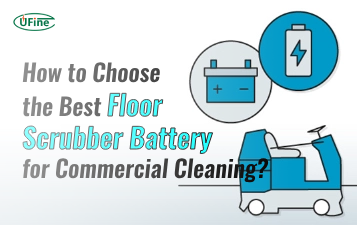
How to Choose the Best Floor Scrubber Battery for Commercial Cleaning?
Selecting the ideal floor scrubber battery ensures a long runtime, rapid charging, and minimal maintenance for efficient commercial cleaning operations.
Battery for Blower vs Battery for Leaf Vacuum: Which One Should You Choose?
Battery for blower vs leaf vacuum—learn the key differences in power, fit, and runtime to choose the right battery for your outdoor tool needs.
How to Choose the Right Battery for Blower?
Choosing the right blower battery? Consider voltage, capacity, chemistry & usage. This guide helps match the best battery for peak performance.
How to Choose the Best Insulated Battery Box for Lithium Batteries?
Choosing the Best Insulated Battery Box for Lithium Batteries? Discover key factors such as size, material, and safety for optimal protection and performance.
7 Critical Elements on a Lithium Battery Shipping Label
What must be on a lithium battery shipping label? Learn 7 key elements to ensure safety, legal compliance, and correct handling across all transport modes.
